If you have a license to carry firearms (or live in a Constitutional Carry state), you likely already have a handgun, or several, that you carry outside your home for protection. How about your castle, have you thought about the best way to defend your home? There are so many facts and myths floating around out there that it can be confusing which firearms might work the best as home defense guns. Here, we will take a look at some of the poppycock as well as some cold, hard facts, about home defense.

The following is a very general discussion, meant to get the creative juices flowing and hopefully guide readers in a direction that will be beneficial to each one.
Some Factors To Consider
Because we tend to stay with what we know, we might be limited as to what weapons types we explore. A positive aspect of that is that whatever we choose, we’re likely to be familiar with it, which is a good thing.
Other factors might be at play, too. Financial reasons could limit a person’s ability to purchase certain firearms. Physical injuries or illnesses can also influence our ability to use certain weapons. Stature and strength can also dictate which weapons can be used (some people aren’t strong enough to manipulate the slide of certain pistols). Localities and their laws factor in, as well. Some states prohibit possessing certain types of weapons.
There are probably other factors out there that dictate what people are able to choose for firearms. With that said, let’s dive into the possibilities and list some advantages, disadvantages, and outright BS that’s circulating about various firearms.
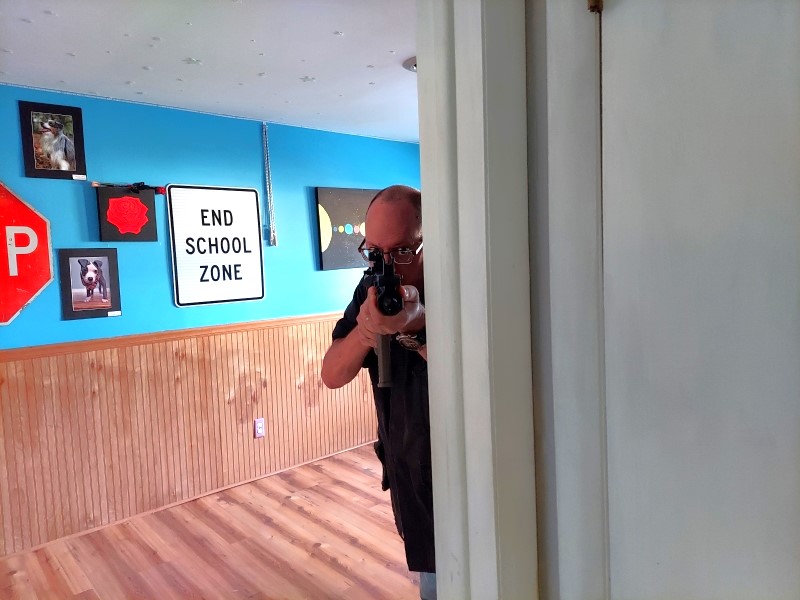
Let’s go over the types of firearms that can be used to defend your home.
Shotguns
A lot of homes in America have a shotgun or three inside, with many being used for hunting or target shooting. Yes, hunting-type shotguns fire projectiles and can potentially be used for home defense, but are they the best tools for the job? Over/under or side by side shotgun only holds two rounds, which is not a lot of capacity, obviously, so magazine-fed shotguns can be a better option. Another factor is their very long barrels, which are cumbersome, at best, inside the confines of a home.
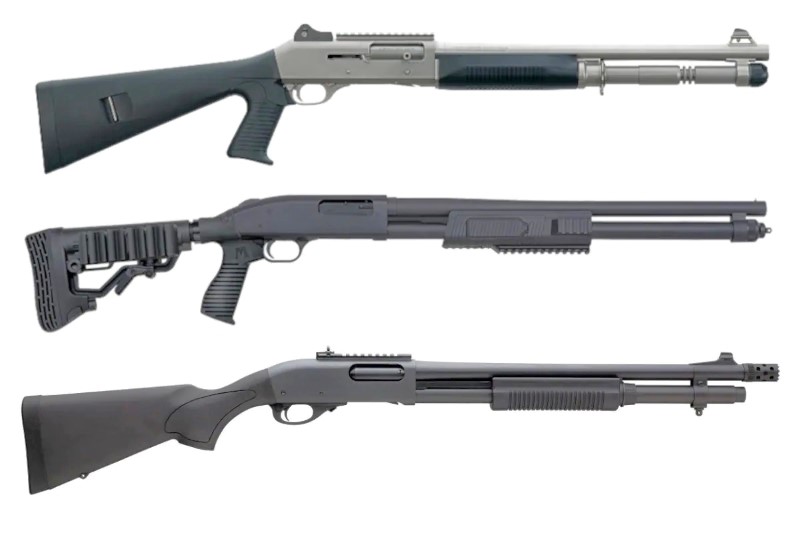
Shotgun BS
- Just racking the slide will cause intruders to flee in terror. I can’t believe how many people actually take this as the truth! Many criminals don’t care that you’re armed; they’re coming to kill you or take your things, regardless. Never, ever count on the mere sound of a weapon scaring attackers away. This one’s been going around so long that people take it as a tried-and-true tactical doctrine.
- You don’t have to aim the shotgun. Merely pointing it in the direction of the target is enough to score hits. Utter poppycock! At room distances, a shotgun pattern is very small with almost no spread, and they have to be aimed just like a rifle or carbine. This one is also an old fallacy that far too many people accept as though it were gospel.
- Instant immobilization. When anyone is hit, in any part of the body, with a shotgun, he will be instantly immobilized (and very likely vaporized).
People love to believe wild, mythical tales of what the vaunted shotgun is capable of. Maybe it makes them feel better to have such an amazing weapon at their fingertips.
Shotgun Disadvantages
- They are long. Even with a barrel of 18 inches, which is the minimum legal length, they are long. If you go the pistol grip and short barrel route, the pistol grip concentrates the recoil into your wrist, which is not comfortable (regardless of how cool it looks). It’s painful. Because of their length, they’re more difficult to maneuver around a home than, say, a carbine or pistol.
- Extreme recoil; A 12 gauge gives the same recoil impulse as a .375 H&H Magnum.
- Typically, they are slow to reload.
- Limited magazine capacity.
- They definitely can penetrate walls. Although less so than other firearms in some instances, caution still has to be used! A lot of people believe a shotgun won’t penetrate the walls of your house, and it probably will. Will it go as far as, say, a .30-06 round? No, but still be cautious
Shotgun Advantages
Knowing the advantages and disadvantages of the shotgun is the key to operating them well. There are enough advantages to consider them for home defense guns.
- Good stopping power.
- Shotguns are very effective at close range.
- Shotguns are common and familiar. Depending on their appearance (wood stock), they are perceived as less threatening (kind of along the lines of the lever action).
- Variety of ammunition. Slugs, specialty rounds, and various sizes of buckshot allow the shotgun to perform a few roles.
Handguns
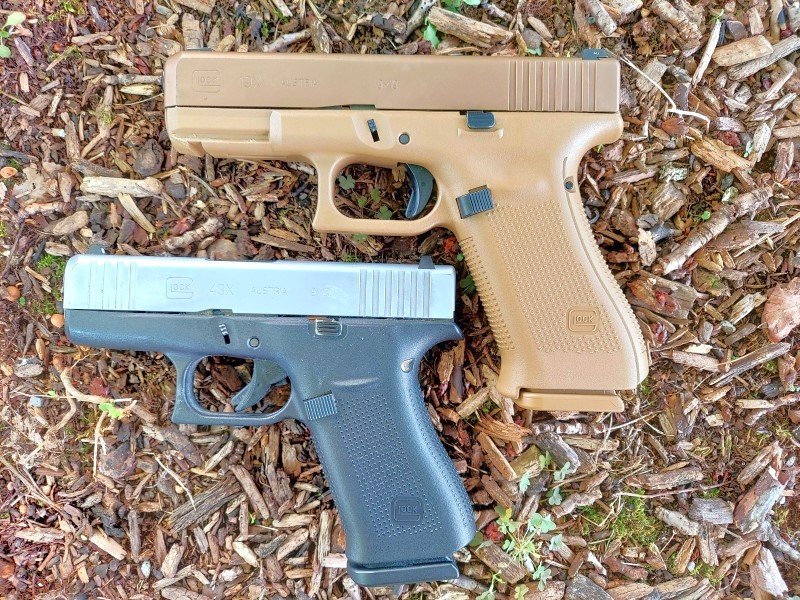
Handgun BS
People are typically willing to fiercely defend their handgun caliber of choice and attack those which they don’t like. However, pistols and revolvers don’t seem to have as many myths attached to them as shotguns do.
- It has to be a magnum to be effective.
- Revolvers never jam. While they rarely malfunction, it can still happen.
- If the caliber doesn’t start with a “4”, it’s worthless.
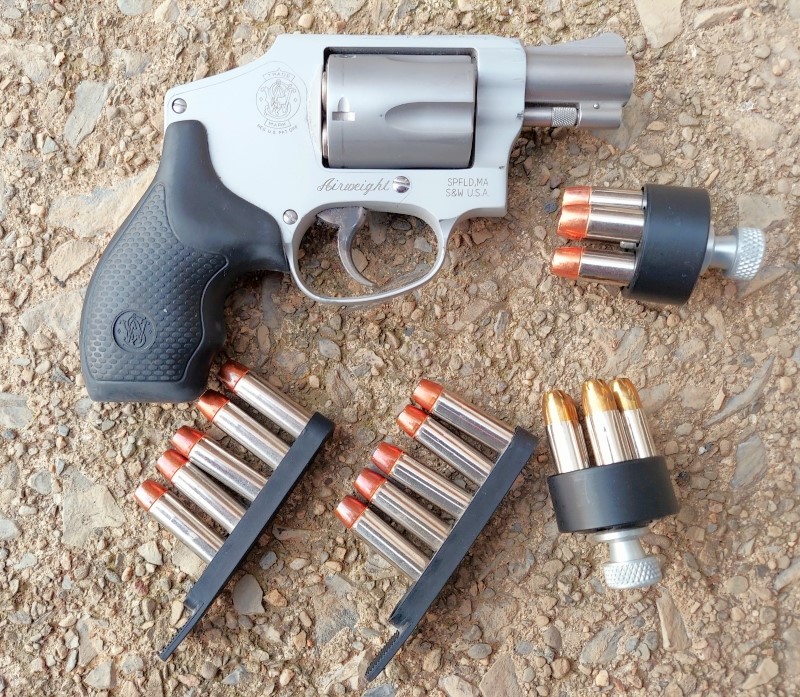
Handgun Disadvantages
- They suck at stopping bad guys, regardless of the caliber being used. This is due to their low velocity. Even your favorite magnum will statistically have less chance of stopping an attacker than a long gun.
- Decreased Accuracy. Because of their short sight radius, they are the most difficult to shoot accurately. The trigger pull can also contribute to the difficulty of shooting handguns accurately, and shooting one-handed takes even more away from already difficult accuracy.
Handgun Advantages

- They are convenient. A handgun is easy to keep on your person in a holster, and it is very likely to be familiar to you, especially if you carry it daily. It’s easy to maneuver in close confines and is also conveniently stored. A handgun can be fired using one hand, but with the aforementioned degradation in accuracy.
- Many will accept a weapon light, which is essential for target identification in low light.
- The muzzle blast isn’t as fierce as with the carbine or shotgun.
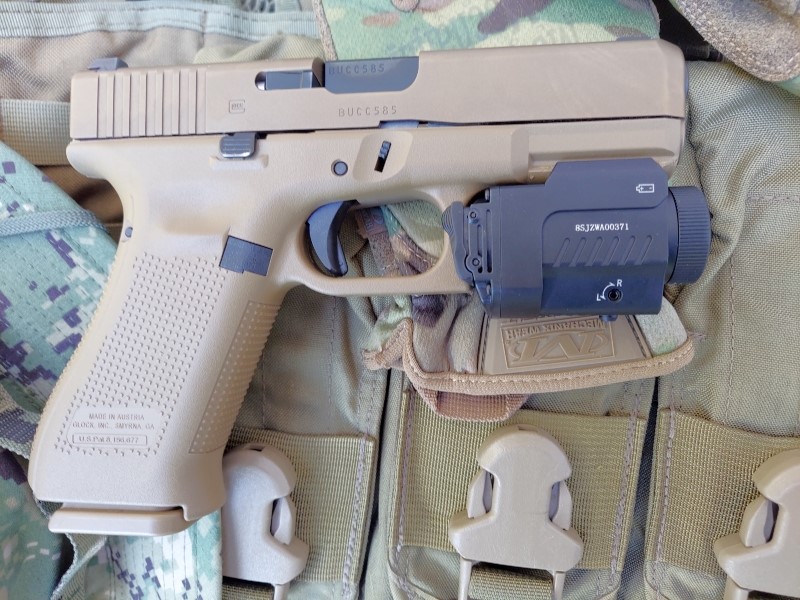
The main reason why I’d use a handgun to defend myself at home is to fight my way to a rifle. I normally do have a handgun on me, so that’s a distinct possibility. The ease of mounting a light on pistols does give them an advantage in that regard. Be aware that pistol bullets will penetrate a few walls easily, so don’t think that, just because you’re using a pistol, family members are “safe” on the other side of a wall, because they are not.
Relying solely on a handgun to defend my home is not something I would want to do because of the listed disadvantages.
Carbines
Disadvantages
- They are often perceived as evil because of their predominantly black color.
- Being able to possess one depends on laws, so ownership is not necessarily legally guaranteed.
- Muzzle blast/noise can be considerable, especially indoors.
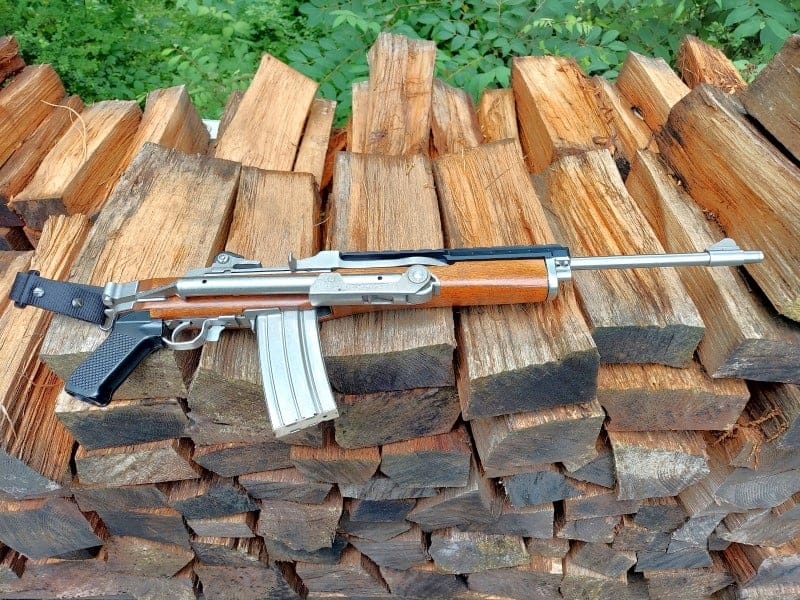
Advantages
Some say that the carbine can do most things that a rifle can do, only not as well. However, it offers distinct advantages in close quarters because it is maneuverable and handy. It’s a good idea to employ hearing protection if you’re going to be touching rounds off indoors because those short barrels do let loose some muzzle blast.
- The controls are normally ergonomic on most models, especially AR-15s.
- Highly reliable.
- Easy to fire.
- Easy to load/reload.
- Low recoil.
- High magazine capacity.
- Compact size makes maneuvering indoors efficient.
- Good stopping power.
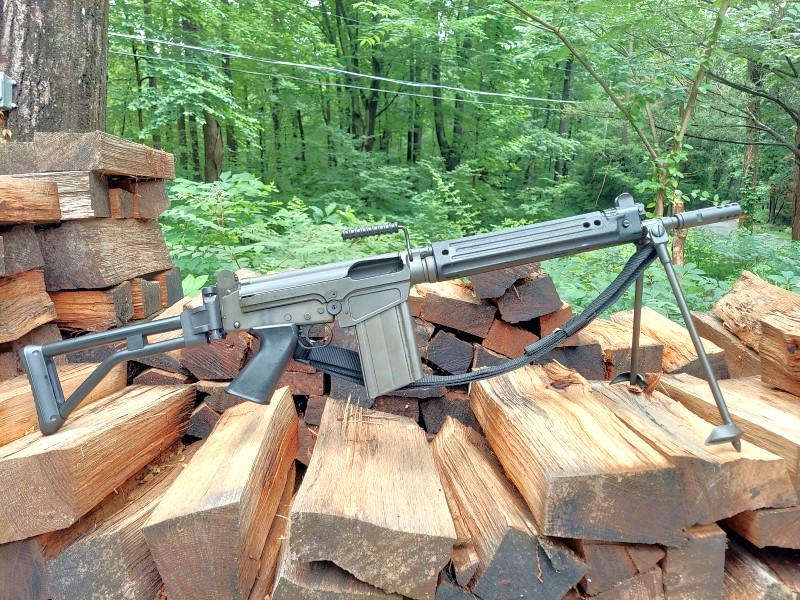
These days, there are many add-ons for carbines, but the most useful for home defense guns would be a weapon light for target identification. A good carbine will work at room distances, all the way out to several hundred yards, so they are extremely versatile. The AR-15, Mini-14, AK-47, and others come to mind.
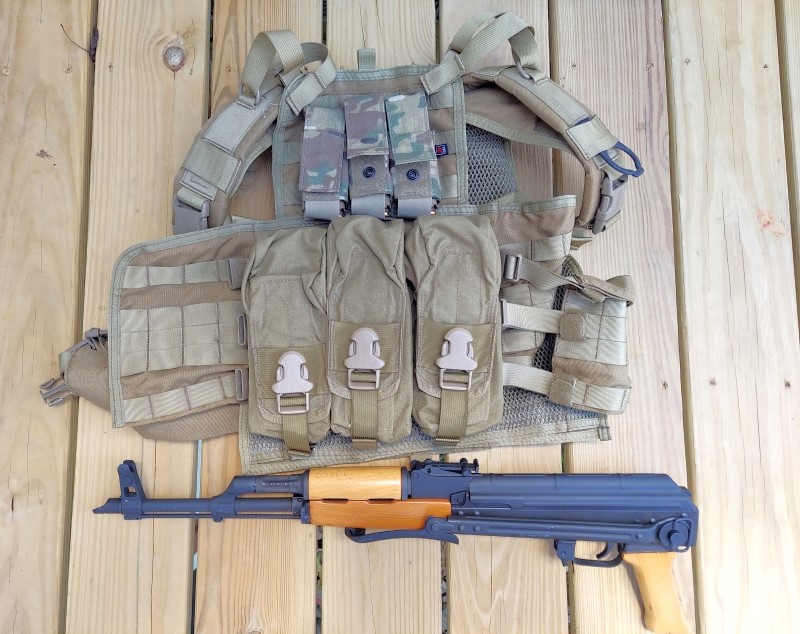
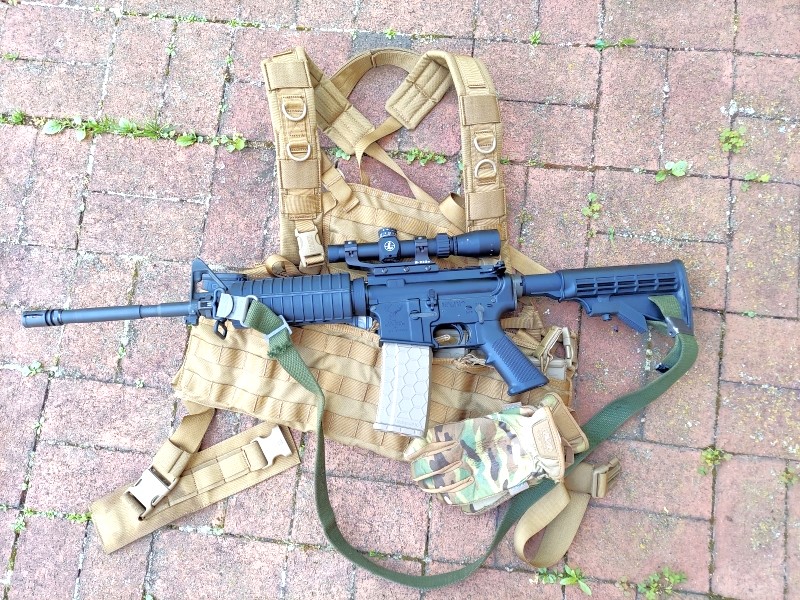
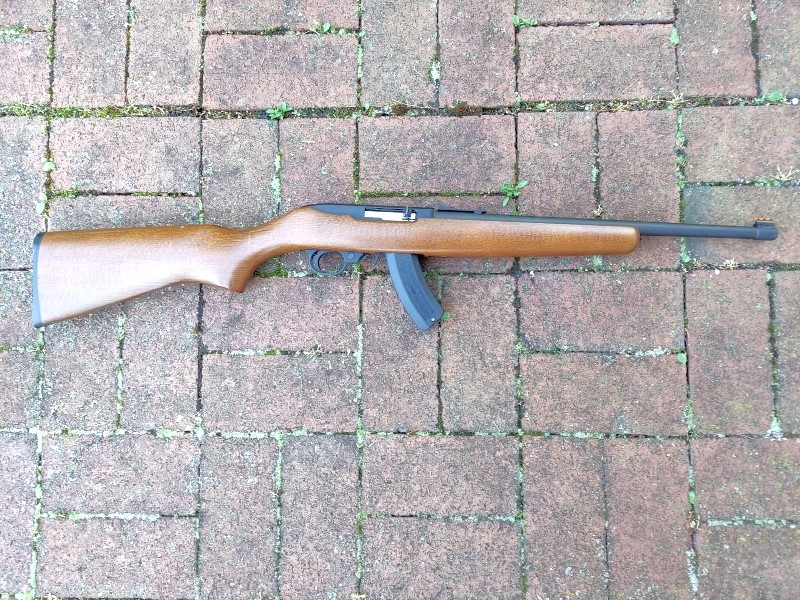
Some, like the lever-action carbines, can fire fairly quickly and aren’t seen as being overly threatening by most people. The old “Cowboy Gun” is pretty blasé, as far as most people are concerned, and yet effective at making bad people go away. It does have drawbacks like being slow to load and, depending on the caliber used, possible over penetration for home defense.
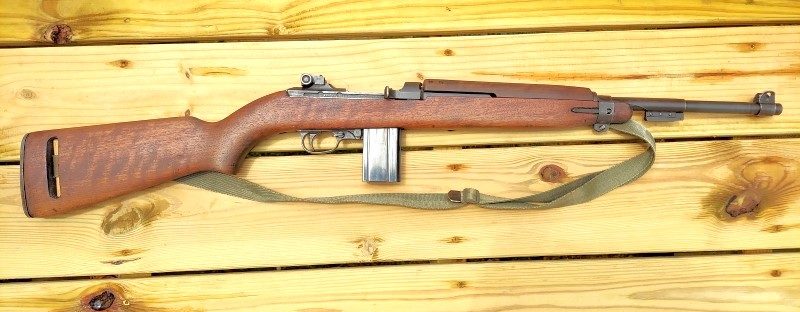
Another interesting twist has been the appearance of pistol versions of the above firearms in the past several years. They’re technically pistols, but with braces, they’re sort of like short-barreled carbines. This offers the homeowner a whole new set of possibilities to choose from for home defense guns.
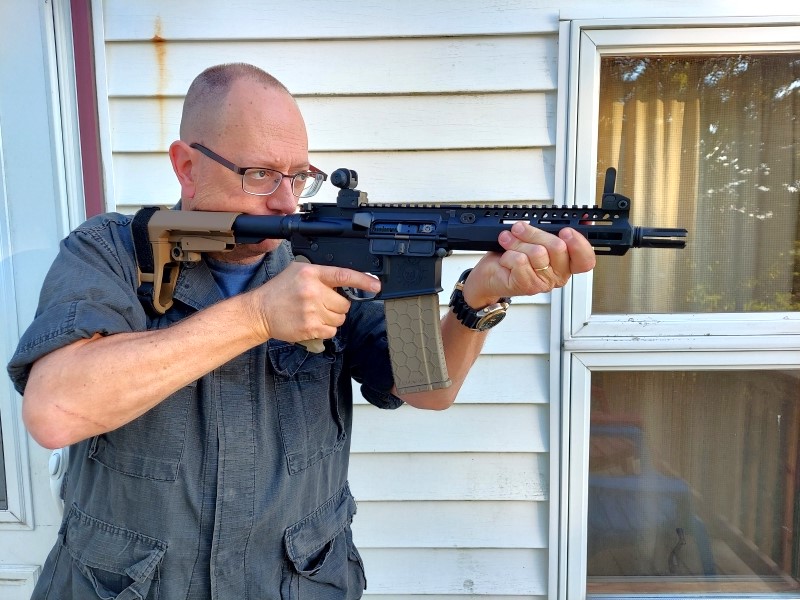
Rifles
Rifles can take on a wide range of actions and might include that bolt action .30-06 that you use for hunting, to an AR-10 or M-1A. The hunting rifle is not going to be as efficient for maneuvering around your house, obviously, because it’s bolt action (slow to load) and probably pretty long. The M-1A, especially in shorter versions like the SOCOM-16 or the Scout Squad version, will be easier to move around with, although you’ll have to be incredibly wary of overpenetration.

Disadvantages
- Like the shotgun, they’re typically long, making maneuvering indoors more difficult.
- Powerful. They can penetrate many interior walls, causing danger to bystanders.
- Muzzle Blast is considerable.
- Recoil might be uncomfortable for some people.
Advantages
- Some have high magazine capacity.
- Powerful. For those living in rural areas, who don’t have to worry about bystanders, the extra power might be useful.
- Good stopping power.
I think most of us would agree that rifles wouldn’t be the first choice for home defense guns. Although, as we see above, each class of firearm has its own advantages and drawbacks. And maybe a rifle is all you have as an option, so you make it work.
In fact, with any of these options, you might be very limited in what you’re able to acquire at the moment. And so you make whatever you have work. If all you have is a single-shot .22, it’s better than nothing. And that’s the first rule of gunfighting—have a gun.


